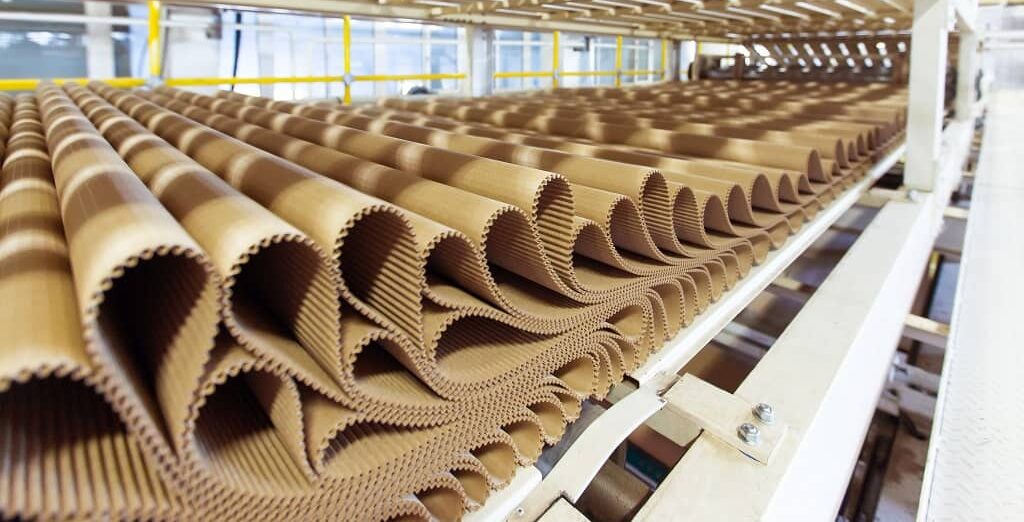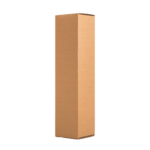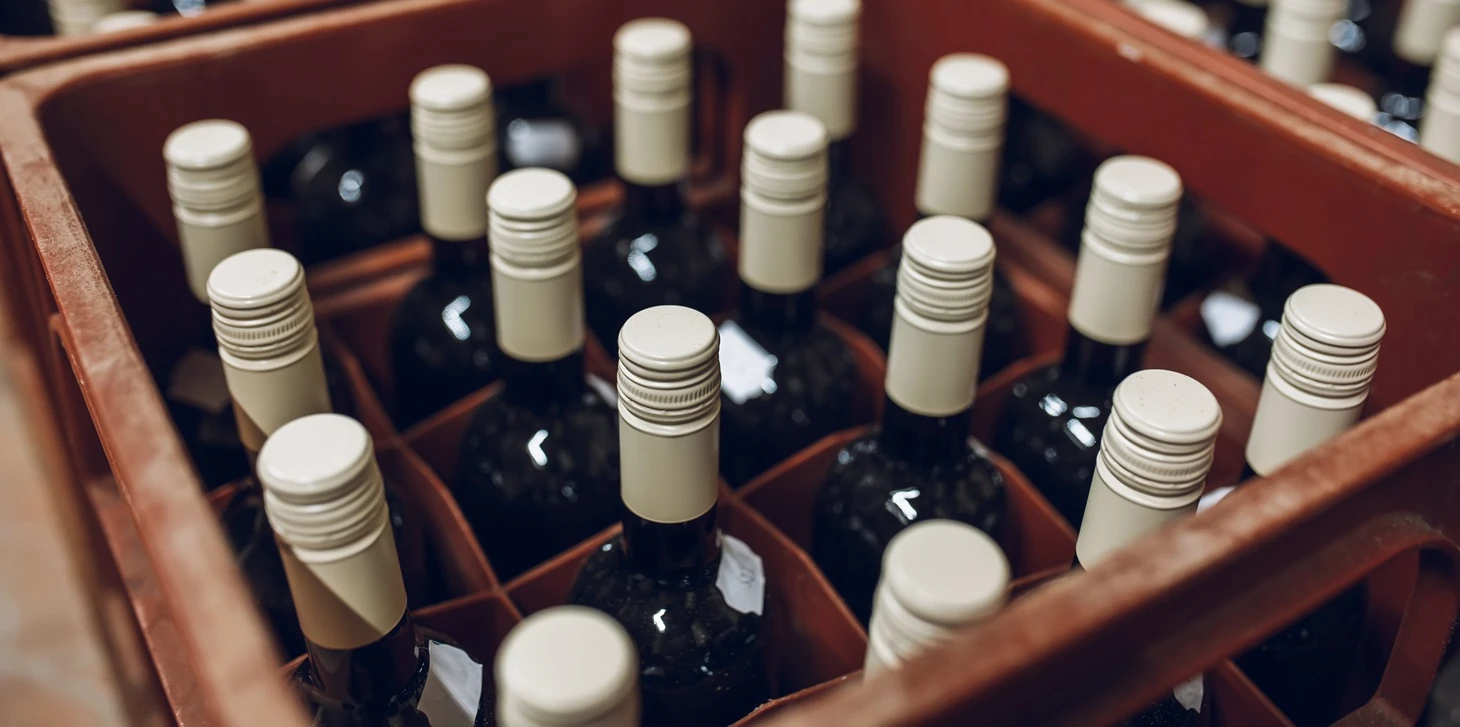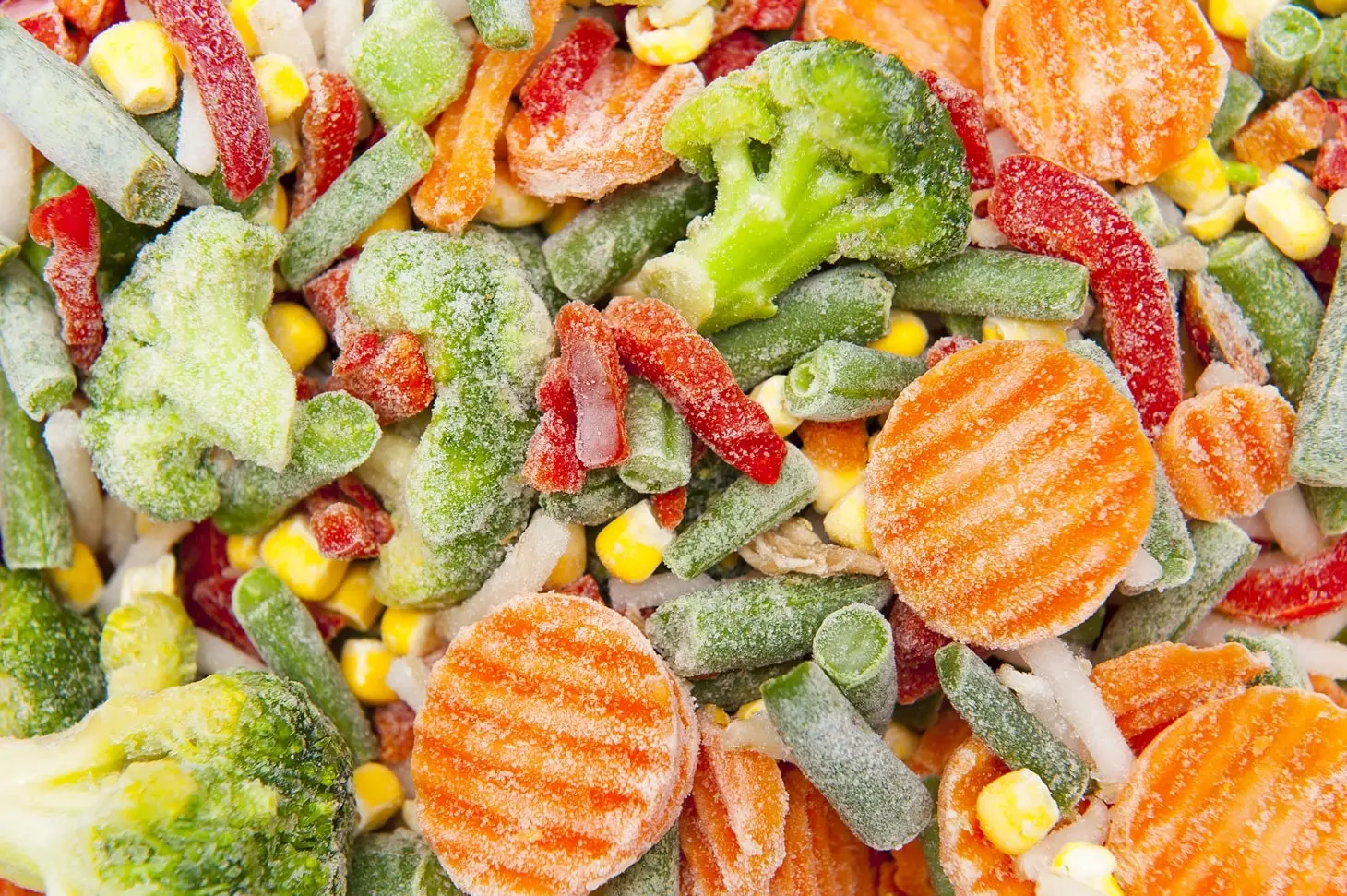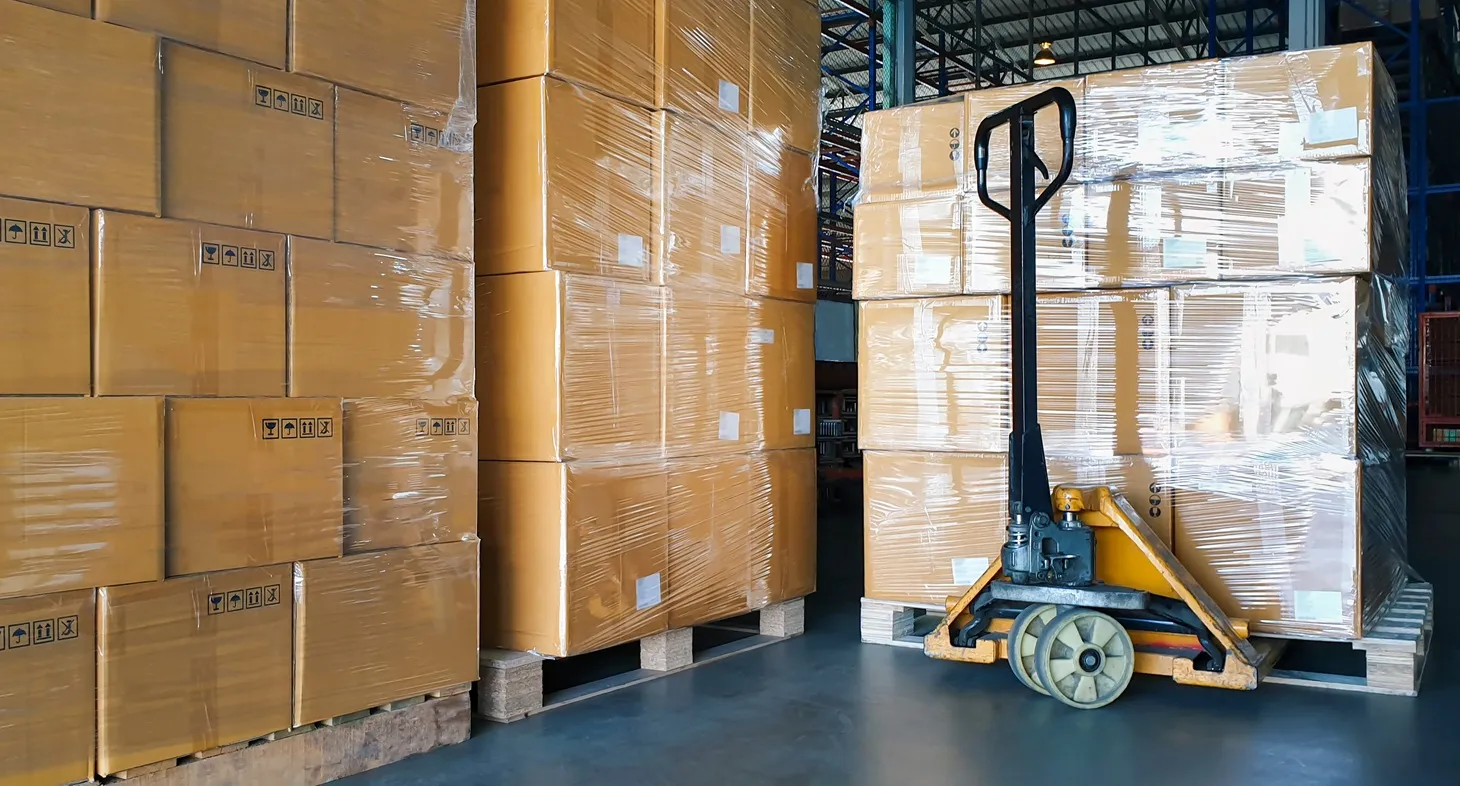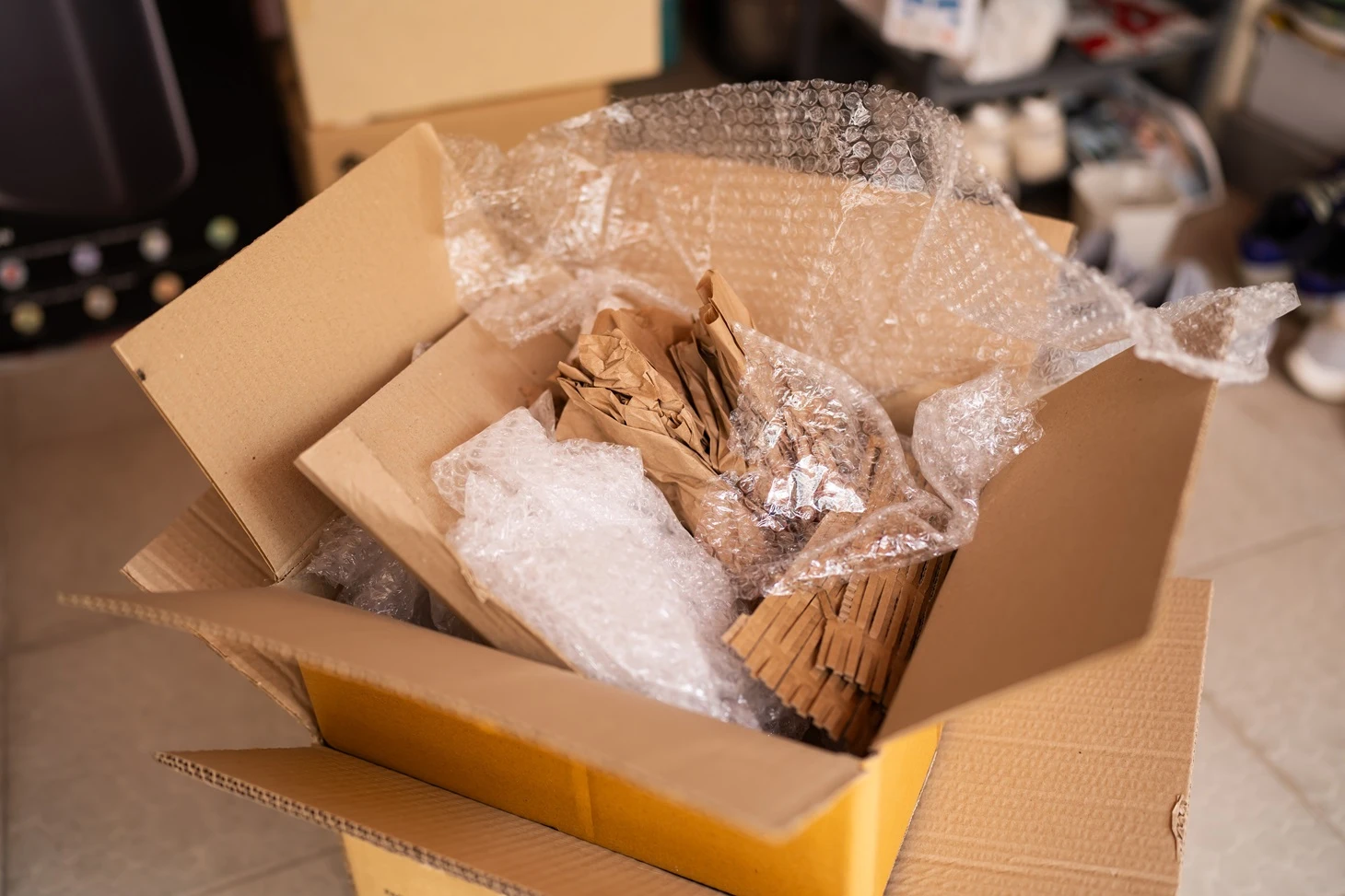Table of Contents
- The Composition of Corrugated Cardboard Boxes: Understanding the Paper Used in Their Production
- Benefits of Using Corrugated Boxes for Small Business
- Corrugated Flutes Explained: A Comprehensive Guide to the Different Flute Types in a Corrugated Box
- Walls in Corrugated Boxes: Examining the Different Types and Their Strengths
- Exploring Different Packaging Styles: Which Is Right for Your Business?
- Packaging Certification Testing: Ensuring the Quality and Reliability of Corrugated Boxes
- Factors to Consider When Choosing Corrugated Boxes for Businesses
- Brandt Box — Your Go-to Source for Premium Corrugated Boxes
Many people mistakenly believe that corrugated and cardboard boxes are the same, leading to confusion over the terms. Cardboard is a thick paper used to make folding cartons and other items, like cereal boxes, found in supermarket aisles.
Though these are suitable for their intended purpose, they are not strong enough to survive the shipping process. Corrugated boxes, however, are strong and able to withstand the rigors of shipping because they’re made from three layers of fiberboard.
If your business buys shipping boxes wholesale, you’ll need to know the ins and outs of corrugated fiberboard boxes, which we cover in this blog.
The Composition of Corrugated Cardboard Boxes: Understanding the Paper Used in Their Production

Corrugated cardboard is made from paper pulp, predominantly composed of timber, recycled wood chips, and shavings from leftover lumber mill waste.
The interior liner of the box is usually made of test paper, while the exterior liner is crafted from kraft paper. Kraft paper is more expensive than test paper but is of higher quality. It is composed of virgin chemical pulp fiber from softwood trees such as pine, spruce, and fir.
Unlike single-sheet cardboard, corrugated cardboard consists of three layers — a fluted filler (corrugated medium) sandwiched by flat liner boards.
The flutes’ structured arches resist bending and pressure, offering high resistance to shocks, moisture, and temperature changes. Since corrugated boxes are made mostly from trees, they are easy to recycle and can be processed into other paper products, including new boxes.
Benefits of Using Corrugated Boxes for Small Business
Finding the balance between cost-efficiency and quality is challenging for small business owners. Yet, corrugated boxes offer an affordable solution without compromising product protection and durability.
Below are the advantages corrugated shipping boxes offer:
- Versatility: Can be crafted into various shapes and sizes to fit the various products;
- Sustainability: An eco-friendly packaging choice made from renewable materials that can be recycled;
- Branding: Printing logos, branding, and other marketing messages on corrugated boxes provides increased brand exposure;
- Durability: Lightweight, easy to manage, move, and store;
- Easy storage: Simple and efficient stacking maximizes storage space.
Corrugated Flutes Explained: A Comprehensive Guide to the Different Flute Types in a Corrugated Box

What is a corrugated box? A corrugated box is made up of sheets containing three or more layers. Typically, a thin sheet with ridges and grooves is sandwiched between two flat sheets, creating what is known as flutes.
Flutes have C-shaped curls known as corrugation, hence ‘corrugated cardboard.’ Their structure increases the packaging’s strength and durability.
Flute profiles range from A-flute (the largest) to F-flute and below (micro flutes). The letter designation relates to the order and size.
A-Flute: Characteristics and Applications
A-flute is the original and thickest of all corrugated flute designs. It offers the highest protection for fragile items and is highly sturdy and pressure-resistant.
- Flutes per Linear Foot: 33;
- Thickness: 1/4.
B-Flute: Benefits and Common Uses in Packaging
B-flute has a lower arch height and more flutes per foot than an A-flute, providing greater points of contact with the liner and a stiff, flat surface for printing and die-cutting.
It is puncture and crush resistant, takes up less space in warehouses, and is ideal for packaging canned goods, beverage trays, wrap-around blanks, glass-to-glass packs, slip sheets, pads, dividers, and partitions.
B-flute is also an excellent choice for high-speed, automated packing lines.
- Flutes per Linear Foot: 47;
- Thickness: 1/8″.
C-Flute: Exploring the Most Popular Flute Size in Corrugated Boxes
Approximately 80% of corrugated containers are made from C-flute board, the most common flute size. It’s perfect for shipping cases and is often used for packaging glass products, dairy products, and furniture. C-flute offers crushing resistance and exceptional stacking strength.
- Flutes per Linear Foot: 39;
- Thickness: 3/16″.
E-Flute: The Thinnest and Most Versatile Corrugated Flute Option

E-flute is a strong alternative to conventional paperboard folding cartons, such as boxes for cosmetics, fragile glass and ceramic items, and delicate instruments. Around 90 flutes per foot give it great crush resistance and a flat surface for high-quality printing applications.
- Flutes per Linear Foot: 90;
- Thickness: 1/16″.
F-Flute: Understanding the Smallest and Most Durable Corrugated Flute Option
F-flute is a type of packaging material developed for small retail items with a lower fiber content than other materials, resulting in stronger and more rigid packaging that produces less landfill waste. Many fast food chains have adopted F-flute material for clamshell packaging.
- Flutes per Linear Foot: 125;
- Thickness: 1/32″.
Walls in Corrugated Boxes: Examining the Different Types and Their Strengths
Once you’ve selected a flute size, you must pick which thickness best suits your packaging needs.
Single-Face Corrugated: What It Is and When to Use It
If you’re transporting something fragile like glass or electronics, a single sheet of liner attached to one sheet of corrugated media provides extra padding and protection. Normally offered in rolls, this material can be a great extra layer of security for your delicate items.
Single-Wall Corrugated Boxes: Understanding Their Features and Applications
A single-wall cardboard box typically consists of two sheets of liner attached to one sheet of corrugated board. It is the most common type of cardboard box and what most people imagine when they think of one.
Double-Wall Corrugated: The Benefits and Applications of This Heavy-Duty Packaging Material
This type of packaging is more durable than single-wall packaging but less flexible because of the extra layer. It is often used in POP Displays and packaging when extra protection or strength is needed.
Triple-Wall Corrugated: The Ultimate Packaging Solution for Extreme Durability and Protection
Triple-wall packaging is ideal for packing industrial parts or produce containers because it is very strong and much heavier than double-wall packaging, consisting of three corrugated sheets and four liner board facings. Logos, however, can be difficult to print on triple-wall boxes, so they should only be selected for specific applications.
Exploring Different Packaging Styles: Which Is Right for Your Business?
Packed items should never be too snug or loose in the box. That’s why there are various packing box styles available for different-sized items.
Regular Slotted Container (RSC): The Most Common Type of Corrugated Box for Shipping and Storage
A Regular Slotted Container (RSC) has two end panels equal in size, creating a symmetrical shape, and two flaps on the two side panels that overlap when the box is closed. Typically, the flaps need to be taped together.
Full Overlap Container (FOL): A Heavy-Duty Option for Packaging and Storing Heavy or Bulky Items
FOL containers are used for large, fragile items and are often utilized in ocean shipping. The overlapping flaps on the four sides form a secure seal and a double-walled design for superior strength and stability.
One Piece Folder (OPF): A Cost-Effective and Versatile Option for Packaging and Shipping
OPF boxes are popular in the retail industry for packaging small items such as books, jewelry, and electronic components. They have a single, large, flat sheet of cardboard that is folded into a box with a lid to contain products.
Full Telescopic Design (FTD): A Fully Adjustable and Secure Packaging Solution for Unique-Shaped Products
This telescope-design-style container is an ideal option for shipping and storage, as its double-walled design provides superior strength and protection. The top and bottom parts of these boxes fit together snugly. These oblong, rectangular boxes are sealed with packaging tape, tuck-in flaps, or strapping to ensure goods remain secure and undamaged.
You also get a telescope half-slotted container with a telescoping lid that allows the container to be opened or closed without having to remove the lid entirely.
Overlap Slotted Container (OSC): An Efficient and Cost-Effective Packaging Solution for Various Industries
This box style, which has all flaps of the same length and an outer flap overlap of at least one inch, can be securely closed with adhesives or staples. When the length of the box is much larger than its width, it creates a long gap between the inner flaps, and the sealed overlap prevents the outer flaps from being pulled apart.
Center Special Slotted Container (CSSC): A Corrugated Box with Reinforced Edges for Enhanced Strength and Durability
The inner and outer flaps of the box have been cut to different lengths and meet at the center. This style is particularly sturdy due to the double thickness of the corrugated board on the top and bottom. Additionally, the inner flaps provide a level base for the product with no gap.
1-2-3-Bottom or Auto-Lock Bottom Container (ALB): A Convenient and Time-Saving Packaging Option for Businesses
This packaging has four die-cut flaps on the bottom panel, making it easy to assemble. Fold the largest bottom panel, then the two end panels, and push down the last panel at the center to snap into the slot.
Great for small-volume shipments but not suitable for heavy items or concentrated loads as the bottom is not fully sealed. The top enclosure can be designed with tuck-top flaps, RSC style, or other configurations.
Wraparound Blank: An Environmentally-Friendly and Customizable Packaging Solution for Unique Products
An unjoined wraparound blank is folded tightly around a rigid product and sealed using automatic equipment to create a box. This box is essentially an RSC (Regular Slotted Container) turned on its side, with the bottom and top unbroken. The joint is only formed once the box is closed.
Packaging Certification Testing: Ensuring the Quality and Reliability of Corrugated Boxes

The strength and construction of a cardboard box play a major role in how much weight it can carry. To help you select the right box for your requirements, manufacturers use various testing procedures to assess the strength of a corrugated packaging box.
Below is an overview of the most common corrugated box testing methods conducted by the packaging industry.
Edge Crush Test (ECT): A Reliable Test Method for Determining the Compression Strength of Corrugated Boxes
In the Edge Crush Test (ECT), force is applied to one side of the box perpendicular to the ridges until it is crushed. The results are measured in pounds per lineal inch of the load-bearing edge, which indicates the strength of a box when stacked and shipped on pallets.
Bursting Test (Mullen): Evaluating the Bursting Strength of Corrugated Boxes for Safe Shipping and Handling
The Mullen Test, also known as the Bursting Strength Test, measures the resistance of the walls of corrugated boards when exposed to force. A rubber diaphragm is filled with hydraulic fluid, creating pressure that will eventually break the walls of the corrugated packaging box.
Flat Crush Test (FCT): Measuring the Ability of Corrugated Boxes to Resist Crushing Under Pressure
The Flat Crush Test determines corrugated cardboard’s strength and how much pressure it can handle without crushing the flutes. This test is useful for anyone using digital or offset printing to create boxes, as it can help them calculate how much pressure they can safely apply during printing.
Water Absorption Test (COBB): Assessing the Moisture Resistance of Corrugated Boxes for Reliable Protection
The Cobb Sizing test measures the water absorbed and retained by corrugated fiberboard. A heavy steel roller is used to squeeze out the water, but depending on the quality, all of the water may not be removed. This test is important for certifications that involve hazardous material packaging.
Paper Grammage and Thickness: Understanding the Physical Properties of Corrugated Board for Optimal Packaging Solutions

There is no universal best grammage or thickness for these boxes; it all depends on the box’s purpose. When more cushioning is required, a box with a greater thickness is the preferred choice, as the larger flutes of the board will fill with more air. Conversely, boxes with higher grammage are needed when the packaging needs to be compact and rigid, as the thinner boards have denser flutes.
Puncture Resistance Test: Evaluating the Strength and Durability of Corrugated Boxes Against Punctures and Tears
The puncture resistance of a corrugated box is evaluated by conducting tests with a pyramid or triangularly-shaped weight, following the standards set by FEFCO 5 or ISO 3036. These tests measure the box’s ability to withstand penetration by sharp, solid objects, thereby assessing its strength and sturdiness during transportation.
Scuff Resistance Test: Measuring the Ability of Corrugated Boxes to Withstand Abrasion and Friction
Printing is a key factor in packaging production. The Sutherland Rub Test is the industry-standard test for coated surfaces such as paper, films, paperboard, and other printed materials. Additionally, corrugated box testing methods such as rotary abrasion testers and manual wiping can be used to test abrasion resistance. Scuff Resistance tests are especially important in industries such as pharmaceuticals and medicine, where label legibility is essential.
Box Compression Test: An Essential Test Method for Determining the Load-Bearing Capacity of Corrugated Boxes

The box compression test, also called a container compression test, is a useful way to evaluate the load-bearing capacity of a box before it becomes distorted and to measure the magnitude of distortion. The test determines the number of boxes that can be stacked together without compromising the contents of the lowest box. Ascertaining the durability of boxes is essential for many industries transporting boxes in large quantities.
Chemical Analysis in Corrugated Box Testing: Ensuring Safe and High-Quality Packaging Through Material Analysis and Testing
A chemical analysis ensures the fiberboard is suitable for specific applications. This involves microscopically examining the board to identify the types of paper used and measuring the moisture content and pH level. This helps understand the nature of the fiberboard and assess its resistance to certain chemicals
Factors to Consider When Choosing Corrugated Boxes for Businesses
To select the right corrugated boxes, businesses need to consider the type and weight of the product, shipping and handling conditions, environmental impact, cost, customization possibilities, and storage and handling regulations:
- Product type and weight: If the product is heavy or fragile, then a box with a thicker flute and a stronger design will be necessary. On the other hand, a thinner box may suffice for lighter products.
- Shipping and handling conditions: Distance and transportation mode will affect the strength and durability of the corrugated packaging box required.
- Environmental impact: Minimize environmental damage by picking boxes made out of recyclable materials or decomposing naturally.
- Cost: Remember, the cost of the corrugated boxes should be balanced against the product’s value and shipping requirements.
- Customization: Consider the different ways you can customize corrugated boxes, like printing and branding, to improve the customer experience.
- Storage and handling: Do the corrugated cardboard boxes fit comfortably in storage areas, and are they easy to handle?
Brandt Box — Your Go-to Source for Premium Corrugated Boxes
With the help of this guide, you should now have a better understanding of what to look for when ordering custom corrugated packaging boxes. Finding a packaging manufacturer is an important step in your business; we are here to help.
Always remember the importance of protecting your belongings during transit, and remember that Brandt Box is here to help with all of your corrugated packaging box needs. Contact us today for a custom quote on shipping boxes.

